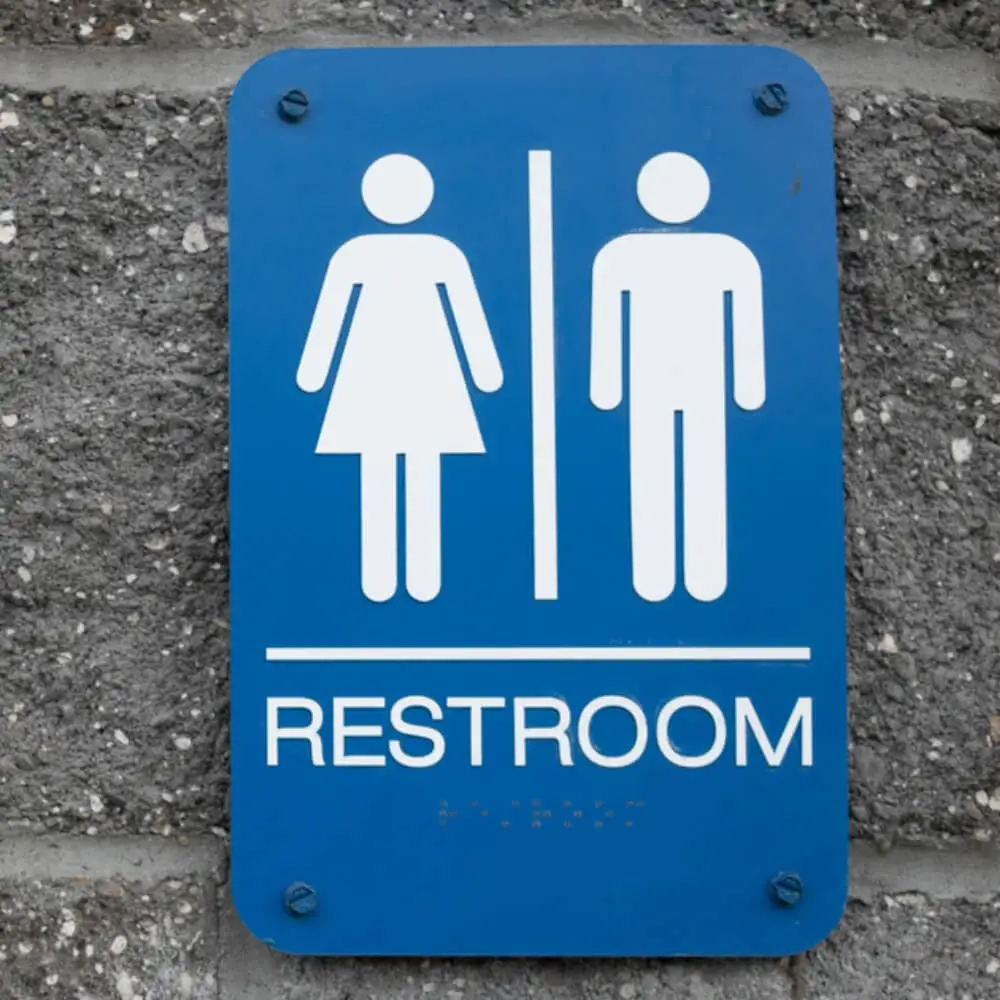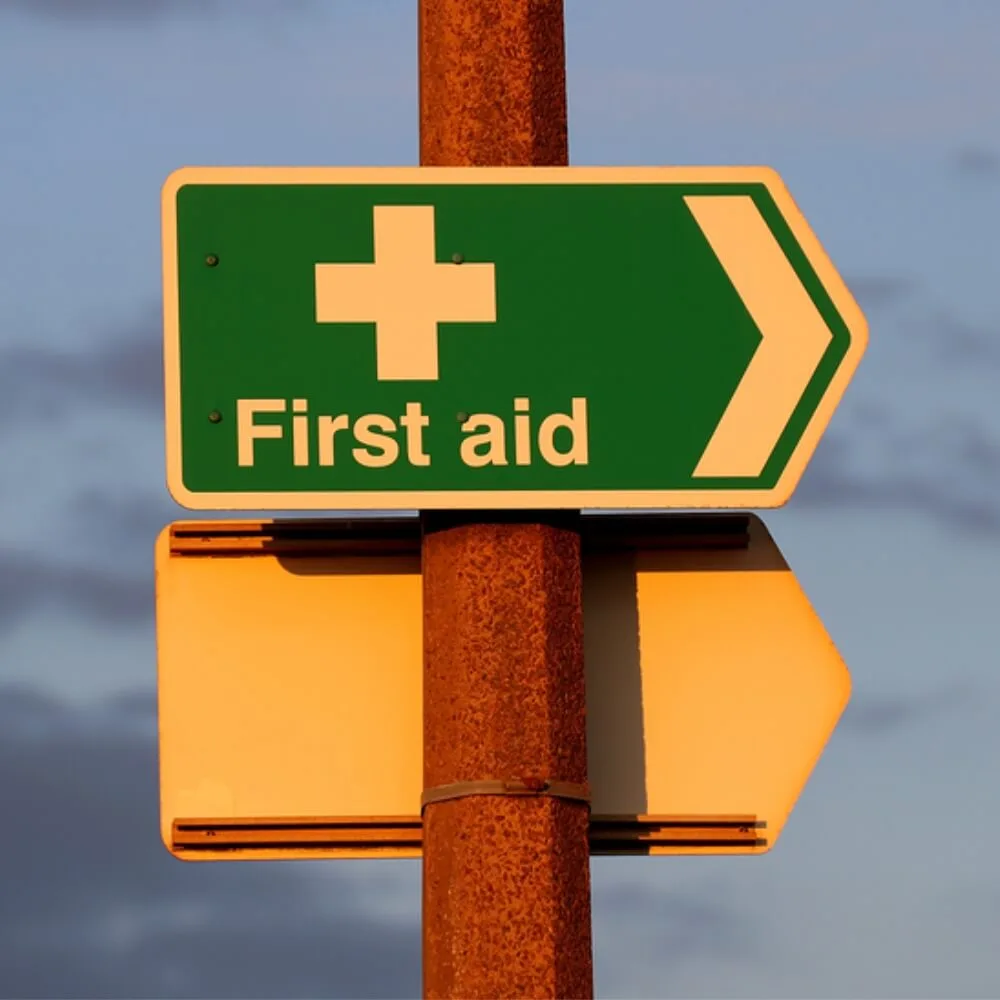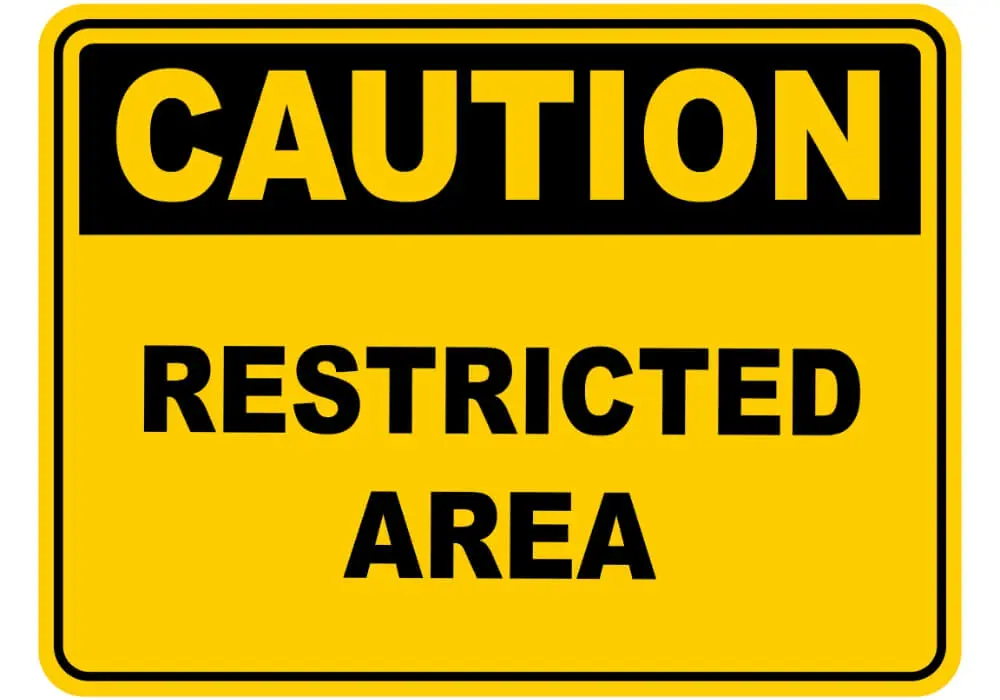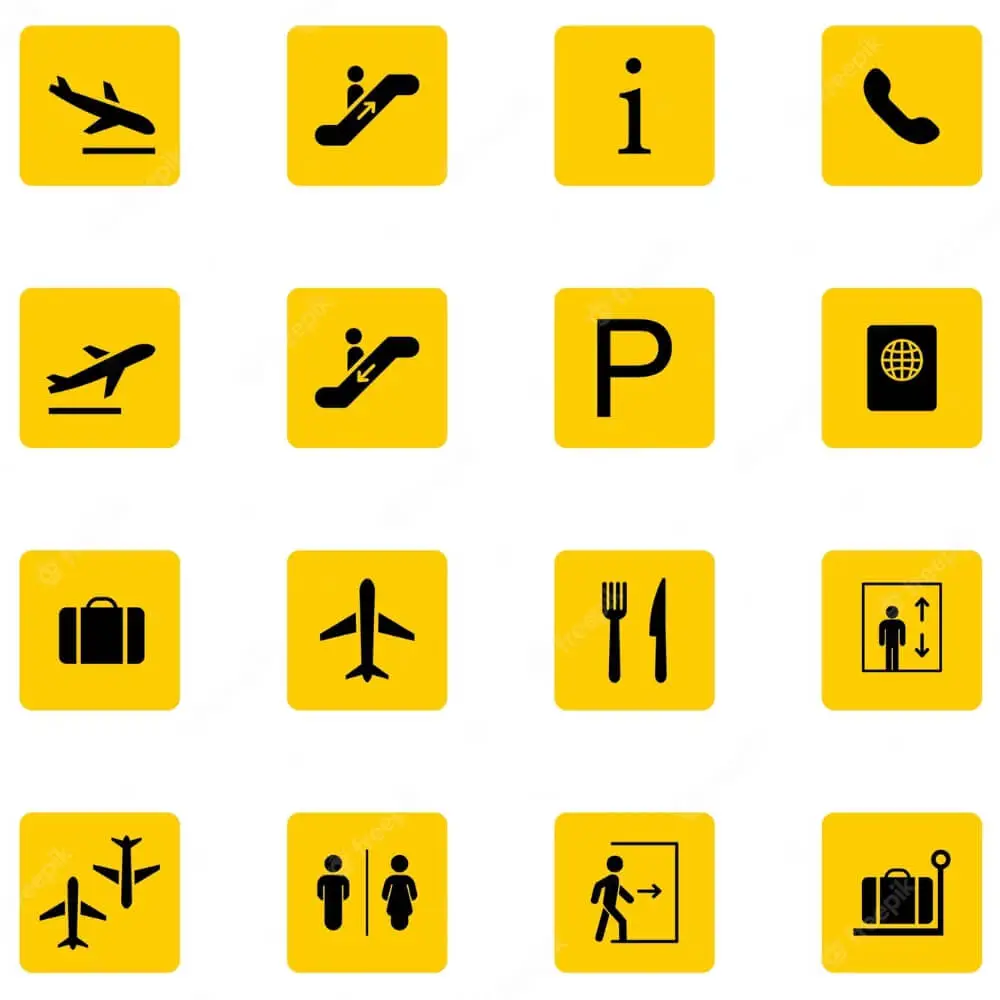In our day-to-day lives, we encounter countless signs designed to guide, inform, and help us navigate our surroundings. These vital tools, known as informational signs, silently shape our interactions with public and private spaces. But what exactly are informational signs? How do they function, and why are they so important?
In this blog post, we’re set to explore these questions. We will delve into the essence of informational signs, unpack their significance, and showcase 12 specific examples that demonstrate their ubiquitous presence in our daily lives. From the directional signs at airports to parking regulations in city centers and museum exhibit descriptions, these unsung heroes play a crucial role in communicating with the world around us. So, without further ado, let’s explore the powerful, pervasive world of informational signs.
What are Information Signs?
Information signs, also known as informational signs, are a type of signage used to convey useful, practical information to the general public. They are typically used to assist in navigation or to provide guidance, instructions, or knowledge about a certain area or facility.
Here are a few specific types of information signs:
- Directional signs: These help people navigate through spaces like malls, hospitals, campuses, or city streets. They may provide arrows or other indicators pointing the way to specific destinations.
- Identification signs: These indicate what a particular building or space is, such as a library, restroom, or park.
- Regulatory signs: These inform about rules and regulations in a certain area. For instance, they may indicate speed limits, parking regulations, or rules for using public spaces.
- Instructional signs: These provide guidance on how to do something. For example, an instructional sign might demonstrate how to recycle different materials properly.
- Safety signs inform about potential hazards or safety procedures, such as “Caution: Wet Floor” or “Fire Exit.”
Information signs can be found in a variety of public and private spaces. They are typically designed to be easy to read and understand, often using universally recognized symbols or pictograms along with (or instead of) words. The effective use of these signs contributes to an organized and safe environment.
Importance of Informational Signs
Informational signs play a crucial role in our daily lives. Here are some reasons why they are so important:
- Guidance: Informational signs guide people where they need to go, helping them navigate complex environments like cities, airports, hospitals, parks, or shopping malls. They make these spaces more user-friendly and efficient.
- Safety: Informational signs can help keep people safe by warning them of potential dangers, informing them of rules and regulations, or guiding them to emergency exits or safety equipment. For instance, signs indicating a wet floor can prevent slips and falls.
- Accessibility: By using universally recognized symbols and clear, simple language, informational signs can be understood by a diverse range of people, including those who speak different languages or have visual impairments. This makes public spaces more accessible and inclusive.
- Education: Informational signs can provide educational content, enriching people’s understanding of their environment. This is especially important in museums, parks, or historical sites, where signs can give visitors a deeper appreciation of the exhibits or features.
- Efficiency: In busy places like airports or hospitals, informational signs help keep things running smoothly by directing people to where they need to go, thereby reducing congestion and confusion.
- Business and Service Promotion: Informational signs also play a crucial role in businesses. They inform customers about products, services, promotions, or operating hours. They help businesses communicate effectively with their customers and can contribute to a positive customer experience.
In summary, informational signs contribute significantly to the functionality, safety, accessibility, and educational value of public and private spaces. They make our environments more understandable, navigable, and enjoyable.
12 Examples Of Informational Signs
Informational signs come in various types and are used in many different contexts. Here are 12 examples:
1. Highway Exit Signs

These signs are vital in maintaining traffic flow and ensuring highway driver safety. They are typically green with white reflective lettering to ensure they are visible in all conditions, including at night. They indicate the exit number, the name of the location or street the exit leads to, and the distance to the exit. Some may also include information about points of interest, such as hospitals, tourist attractions, or cities that can be reached via that exit. They are strategically placed to give drivers ample time to safely maneuver into the correct lane.
2. Public Restroom Signs

These signs serve to indicate the location of public restroom facilities. They typically utilize universally recognized symbols to denote men’s, women’s, or unisex restrooms, often in addition to the word itself. They can also include accessibility information, indicating if the restroom is wheelchair-accessible or has facilities such as baby changing stations. These signs are crucial for comfort and accessibility in private establishments like restaurants and public places like parks or city streets.
3. Parking Signs

Parking signs are incredibly important in managing parking rules in different areas. They display crucial information, including whether parking is allowed or prohibited, the hours during which parking is allowed, and whether it’s free or paid. They might also indicate restrictions or special conditions, such as “No Parking during Snow Emergencies” or “Residential Permit Parking Only.”
Some parking signs denote zones reserved for specific users, such as disabled parking spots marked with the International Symbol of Access (a stylized image of a person in a wheelchair). They can also indicate the direction of valid parking, the maximum allowable parking time, or the need to display a parking disc or permit. Failure to follow the instructions on these signs can often result in fines, towing, or other penalties.
4. Fire Extinguisher Signs

These signs are usually bright red or have a red element and are clearly marked with an easily recognizable symbol of a fire extinguisher. They are designed to indicate the exact location of fire extinguishers in a building, ensuring that they can be found and accessed quickly and easily in the event of a fire. The sign’s visibility is crucial even during an emergency in smoky or low-light conditions.
5. First Aid Signs

These signs are essential for pointing out the location of first aid kits or rooms within a workplace. They typically feature a universally recognized symbol, often a white cross on a green background. Quick and easy access to first aid supplies can be crucial in an injury or medical emergency. These signs might also include a map or directions to the nearest first aid station in larger workplaces.
6. Restricted Area Signs

Restricted area signs are used to signify areas that are off-limits to unauthorized personnel. These could be areas that contain sensitive information, dangerous equipment, or substances. These signs are typically bold and use clear language and symbols to communicate the restriction. The goal is to prevent accidental entry and maintain the security and safety of the workplace.
7. Conference Room Signs

These signs can serve multiple functions. They might identify a room as a conference room, provide its name or number, and even display its current status. For instance, they might indicate whether the room is currently in use or free, preventing unwanted interruptions during meetings. Some advanced signs are digital and can be updated in real-time, showing the room’s booking schedule for the day. They contribute to the efficient use of shared spaces in the workplace.
8. Stairway/Elevator Signs

In large buildings, it’s crucial for occupants to know how to move between floors. Stairway and elevator signs guide people to these important areas. They typically feature simple, easily understood symbols, such as a person walking up a flight of stairs or an elevator car. In addition, they may indicate which floors the stairway or elevator can access, whether the elevator is accessible to persons with disabilities, or if the stairs are part of a designated fire exit route.
9. Emergency Exit Signs

These are among the most critical signs in any workplace. They are typically illuminated by internal lights or photoluminescent material, so they can be seen even in power outages or smoke-filled conditions. These signs show the quickest and safest route out of the building in case of an emergency, and their design and placement are often regulated by local building codes. In many jurisdictions, regular inspections are required to ensure these signs work properly.
10. No Smoking Signs

These signs are designed to create a healthier environment by prohibiting smoking in certain areas or throughout the entire workplace. They typically feature a cigarette enclosed in a red circle with a diagonal line across it. They are often placed at entrances, in break rooms, or wherever the smoking policy needs to be communicated. These signs are often required by local laws or regulations, especially in places where fire safety or health risks are a concern.
12. Airport Signs

Airports are complex environments, and airport signs play a vital role in guiding passengers and maintaining smooth operations. These signs cover a range of information. They indicate gate numbers, direct passengers to baggage claim areas, customs checkpoints, ticket counters, and security check areas. They provide directions to different terminals, transport links like buses and trains, car rental services, and amenities like restaurants or lounges.
Some signs provide safety instructions, like those indicating exits, no smoking areas, or procedures in case of an emergency. They might also display flight information, like arrivals, departures, and delays. These signs are typically standardized with clear symbols and colors to assist even those who don’t speak the local language.
12. Bus Stop Signs

These signs provide essential information for public transport users. They usually display the bus route number and the final destination but may also list intermediate stops or landmarks. Some include timetables showing when the bus is expected to arrive at that stop, though these times can be approximate depending on traffic conditions.
Many modern bus stop signs include QR codes or NFC tags that passengers can scan with their smartphones to access real-time bus tracking information. Some might also provide a bus route map or information about connecting services. Bus stop signs are standardized in many places to be easily recognizable and understandable.
Conclusion
In the journey through our blog post, we’ve seen the incredible versatility and essential nature of informational signs. They act as silent guides, helping us navigate complex environments, ensure our safety, offer invaluable insights, and make spaces more accessible and inclusive. With their universally recognized symbols and clear language, they communicate effectively across language barriers and cultural differences.
From highway exit signs directing us to our destinations, restroom signs ensuring comfort and accessibility, to trail signs educating us about local flora and fauna, the examples of informational signs we’ve discussed today underscore their crucial role in our daily lives. They ensure smooth operations in busy spaces like airports and hospitals, facilitate knowledge transfer in educational spaces like libraries and museums, and help us access services efficiently in restaurants and public transport systems.
In conclusion, informational signs are more than mere indicators; they are the pillars of effective communication in public spaces. Their silent yet impactful presence shapes our interactions with the world, making it a more navigable, understandable, and, ultimately, a friendlier place. We hope this exploration of informational signs has given you a new appreciation for these everyday guides that steer us through our lives.

